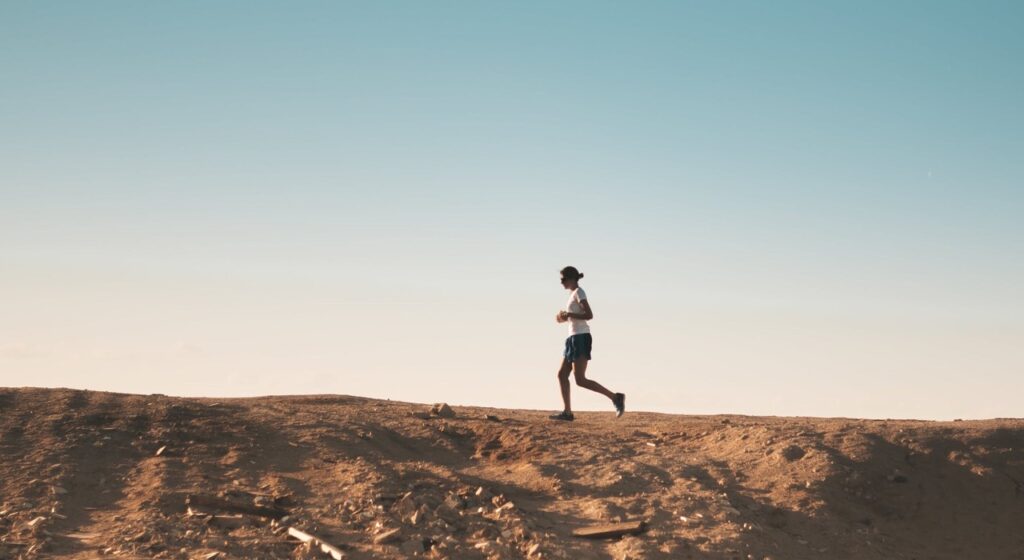Fitness News & Trends, Health News & Trends
My Story of Surviving a Stroke at 35 and Still Running Three Marathons
Justin Cadelago underwent his first open heart surgery at week old. His narrow aorta was caused by coarctation of the bicuspid aortic valve, which required to be repaired. He had another surgery as a toddler.
I had a normal, busy childhood after that, except for cardiologist visits. I played several sports. However, at 29, I was informed I needed another aortic repair operation. It was successful, although I could have had another operation. I recovered quickly since I was young and healthy. I resumed my life without much thought. You probably believe you’re invincible at that age.
Thanksgiving 2021 followed. The day started normally, but since it was a holiday, I didn’t work or chat to anyone. I was alone in my NYC flat. After trying to call my dog over, I discovered I couldn’t utter his name. I couldn’t talk. That day was definitely my scariest; I still shake thinking about it.
I rushed straight to the hospital and was diagnosed with a transient ischemic attack (TIA) potentially connected to multiple heart procedures. A TIA is like a mini-earthquake: it signals something greater. Doctors prescribe several blood thinners and anticoagulants. This is scary since you can’t ride a bike and must be very careful. Paper cuts flow everywhere.
Sports had always been my release; I played basketball and discovered boxing. It was very risky, so I was advised to stop immediately. My sadness set in. I felt my life ended at 35.
Physical activity became a need for me. When I asked my doctors about hiking or biking, they said to stroll. Walking didn’t reduce my tension or anxiety. Running was my worst fear, but I begged my physicians to allow me. “Okay, try running a mile at a very slow pace.” So I did.
I was relieved to break a sweat and feel normal again. Ran again the next day, progressively increasing my mileage until I reached three or four miles and got that runner’s high, which I’d never had before because running is a punishment in typical sports training.
I felt like I’d connected with something bigger when I sensed that. My endorphins returned, and I started thinking positively again instead of negatively. I chased that feeling again the following time I ran. Something clicked when I thought of the other stroke patients, some of whom were immobilized. Why was I mad? I felt happy to be recovering and find a new activity I enjoyed. My mentality switched from depression and dread to thankfulness.
I signed up for the Miami Half Marathon to keep going. A month after the TIA, I earned a place in February 2022 midway through December 2021. I could look forward to and train for it daily. Movement took over my life, and I refocused on it. I sobbed after finishing the Miami Half because it was my biggest athletic accomplishment since high school basketball. I instantly registered for the Los Angeles Marathon next month.
At the same time, I made wellness-focused lifestyle adjustments. I started eating plants, doing breathwork daily, getting enough sleep, journaling, and being grateful. Anxiety and depression don’t go gone overnight, therefore I still felt them some days. Running was a continuous North Star which helped. I knew running would make me feel better.
Just over a year after my stroke, I completed the New York Marathon and collected $10,000 for the American Heart Association.
After moving from New York to San Francisco, I fell in love with trail running. Immersing in nature is nearly spiritual. To avoid losing my joy for running by overdoing it or doing it for the wrong reasons, I don’t focus on my speed or time. I want to wake up excited to run every day.
Weightlifting, mobility exercises, and stretching have resumed. Boxing may return to me. I love running in the mountains and always have a race or challenge planned.
Running altered my life and helped me recover from my stroke. I can now reinterpret that experience and how I think about my life without fear of being sick again and let appreciation propel me.


